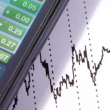by Hubert Marleau, Market Economist, Palos Management
History shows that risky asset prices are heavily influenced by the interaction of economic growth and inflation. Financial assets react differently to periods of rising inflation, slowing inflation, rising economic activity and slowing economic activity. Put simply, there are essentially four types of macro economic environments; and each one has particularities. These are: Deflationary Expansion (rising economic activity, combined with low inflation), Inflationary Expansion (rising economic activity, combined with high inflation), Deflationary Contraction (declining economic activity, combined with low inflation), and Inflationary Contraction (declining economic activity, combined with high inflation).
Barring left-field external shocks (the spectre of wars, viruses, political disruptions, geopolitical issues), the transition from one environment to another is normally associated with abrupt changes in monetary or fiscal policy. In other words, one must first determine in which quadrant we currently are and then assess whether central banks will employ policies to change outcomes.
Since no one is capable of forecasting economic data with decimal point precision, I have become almost totally apathetic when it comes to forecasting numerical equity and economic benchmarks. As a rule, economists and strategists who make them always revise again and again, throughout the year. On rare occasions when one of their manifestos nails it twelve months in advance, it's just a testament to luck, rather than precision. Given that it is impossible to forecast beyond one week due to the sheer amount of ambiguity around the effect of the virus on inflation and labour, I write a weekly commentary in order not to be outdone by ongoing events, which would otherwise throw the robustness of my present macroeconomic environment off balance.
My job is to determine in which quadrant the economy stands, what the majority assume the prospects to be, and how probable they are. I monitor economic, monetary and financial data on a daily basis to evaluate if the market and its strategists are either over-or under-estimating whether economic growth and inflation will be weaker or stronger than expected. The logic may appear elusive, but it has worked well for us over the past 20 years.
Currently, the macroeconomic environment can be definitely classified as the “Inflationary Expansion Type”: economic growth is strong and inflation is accelerating. The latest estimate of the Atlanta Fed’s GDPNow model is suggesting that real GDP growth in Q/4 of 2021 will rise at the seasonally adjusted annual rate of 7.2%. Meanwhile, Bloomberg's monthly survey shows the PCE price index will increase 5.4%. Different samples reported that the consumer-price index rose 6.8% y/y in November while final producer prices increased 9.6%. Unsurprisingly, the private sector is reacting in a rational fashion as private domestic investment could surge by as much as 13.6% in real terms in Q4.
Forced by these factors, the Fed did not want to lose credibility. Last Wednesday, it set the stage for raising rates earlier and by more next year than it had previously anticipated. In this regard, the monetary authorities moved to wrap up their bond purchases by March, opening up the possibility of an initial rate increase as soon as March 2022. As a matter of fact, the policy makers expect to raise the policy rate by 0.75% by the end of the year, whereas they were previously split in September on whether to raise rates at all. This shift was caused by three key reasons.
Firstly, contrary to prior belief, the pricing pressures stemming from supply-chain problems and difficult logistics have been particularly persistent. Secondly, the Fed wants to be preventive and avoid a wage-price spiral. There are five million fewer people employed now than during the pre-pandemic period. Yet, the ratio of job vacancies to unemployed people is at a record. Given that millions have decided not to re-enter the labour force, wages are rising briskly.
The thing is that wages have a tendency to determine whether today’s inflation is transitory or permanent. Hourly wage costs swelled at a 6% annual rate in Q/3. This is clearly incompatible with the Fed’s 2% inflation target–unless worker productivity clips along at 4.0%. Powell does not have the enthusiasm of Cathie Wood when it comes to what technological advancement will do to economic efficiency. Thirdly, there is plenty of liquidity in the financial system, the banks are not under any stress, the credit markets are holding well, and valuation metrics are high enough to absorb punches.
Obviously, there is the risk that the Fed may make a policy error, like running out of patience too soon or not acting fast enough and getting behind the curve. However, we live in an era of predictable uncertainties, giving the monetary officials little chance of doing the right thing other than trying to be prudent and just show a posture of willingness to do the right thing. In this connection, it is important to know which macroeconomic quadrant the street is betting on. Overwhelmingly, investors are apparently assuming economic growth will return to the 4% nominal GDP growth that existed before the pandemic hit. That is 2% for growth and 2% for inflation.
The Fed‘s policymakers and traders in futures markets have similar views. The December updated median dot plot that the Fed provides every quarter projected that by 2024, the annual change in R-GDP will be 2.0% and that over the longer run it will not do any better than 1.8%. As for inflation, the PCE inflation index is expected to tumble to an annual rate of 2.1% by 2024. and stabilise around 2.0% over the long term. If one were to accept the notion that the level of debt is too high to risk allowing interest rates to rise too much, and that the unaffordability, in terms of upward pressure on the dollar, of having US interest rates out of sync with those in the eurozone, the term premium or extra compensation investors would require in return for holding
long-term bonds would probably prove very negative. If this observation is basically correct and if there is still some informational value embedded in bond yields, the forecast of bond traders for inflation and growth is very similar to those of the Fed.
The trick to gain alpha is to choose correctly whether the path of the economy in nominal terms (N-GDP) will be lower or higher than the consensus. I’m opting for over 4.0% growth in N-GDP. While I recognize that the contraction of globalisation, ageing of the US population, shrinking labour force and lack of spare capacity will likely slow down growth over the next three years, it won't be enough to reduce nominal economic and earnings growth. The excess reserves found in the banking system, the excess personal savings of households, the productivity gains in the making and foreign-held dollars flowing into private investments, will keep the economy in an inflationary expansion environment for many more quarters.
Excess Reserves and Repos: The Fed is tapering its money-printing press, but it will not weigh on the growth of the money supply. Year-to-date, bank excess reserves at the Fed have grown by about $2.5 trillion with overnight repos at the Fed independently rising to $1.8 trillion. That is a lot of real high-powered money. Thus, the commercial banks have all the ammunition needed to more than offset the Fed’s exit and supply the economy with money for years to come.
When a commercial bank makes a loan, or buys a security from a non-bank player, it creates new deposits, and therefore new money. Like the Fed, banks can create money out of thin air. There are good reasons to believe that the banks are ready and willing to extend credit to industries and households. Their balance sheets are stress-tested, their lending standards are easing, and their instincts are price-sensitive. The banks are in better shape than ever to take over the money-creation baton from the Fed.
Excess Savings: Over the past two years, corporations and households have accumulated more than a trillion dollars of savings. The national savings rate has lately started to tick down, accepting rising prices. Although wage rates are not presently keeping pace with inflation, households have accumulated so much savings that they are capable of absorbing the new prices that businesses are demanding for their products and services. Thus, the disposition of savings will likely protect corporate profit margins.
Rising Productivity: The inflation that the pandemic has caused through supply-chain bottlenecks, lack of materials, labour shortages, fiscal relief and monetary stimulus, is forcing the corporate sector to change its business model, raise capital expenditures and introduce digitalisation, robotics and efficient online services. It may be obscure, but when monetary policy is too loose, it damages aggregate supply because it discourages investments in real assets like business capital formation.
This phenomenon however is indeed in the process of changing. The oncoming rate-rising cycle should lead to more real investments by drawing much of the money, which is presently hoarded, out of the woodwork. Moreover, infrastructure spending on the likes of roads, bridges, and broadband networks may turn out to be inflationary during the construction phase, but in time will be productive. It will create the utility to pay for itself. Better infrastructure tends to raise spare capacity, unlock congestion and encourage business activity.
Foreign Investment Flows: It is weird that over the last 10 years, U.S. consumers have pushed roughly $5.0 trillion out into the rest of the world and that none of that money has found itself, in the form of foreigm reserves, in the coffers of central banks. While I can understand that big chunks of it are used to fund trade and capital investments, what happens with the part that is saved by the private sector remains somewhat of a mystery. Acknowledging that this money has not flowed into US treasuries, one needs to question where it all goes. It appears that only a modest amount has gone into Chinese bonds, gold and cryptocurrencies.
According to Charles Gave of GavekalResearch, the only logical destination for the excess US dollars in the system must be listed equity markets. He came to this conclusion by cleverly referring to Sherlock Holmes' dictum: “ When you have eliminated the impossible, whatever remains, however improbable, must be the truth”. The bulk of it must have gone into the US equity market-the one with the deepest liquidity. It's as if the US dollar has kept its standard of value, but lost its standard of reserve to the tech sector.
Conclusion
In the absence of a recession, it does not seem possible that the U.S. economy is returning to sub-4% nominal growth. At this time, the risk of a recession is very low. Accordingly, the inflationary expansion that we are presently witnessing is my preferred scenario for now. Given that energy, materials, industrials, financial and REITS have in the past correlated well with high nominal GDP growth, my portfolio is skewed with names in those sectors.
The Weekly Snapshot of the Stock Market
The market had a rough week because anxiety ran high as several OECD central banks showed determination to tighten their monetary stance to fight inflation even at a time when Covid-19 cases were rising fast. The Federal Reserve accelerated tightening plans, the Old Lady actually hiked interest rates, the ECB confirmed that it will wind down purchases and the BOJ said it would gradually lower holdings of commercial paper and corporate bonds. To make matters even uglier, there was the “quadruple-witching” hour on Friday. This occurs when stock options, index futures, single stock futures and index options all expire on the same day.
When that happens, traders tend to re-hedge their exposures, which often cause additional selling, and in turn often create unwanted volatility. In the week ended December 17, 2021, the S&P 500 fell 91 points or 1.9% to close at 4621. However, there is a good chance that the market will snap out of it. The BofA’s Global Manager Survey (FMS) showed that institutional investors increased their cash holdings to more than 5.0% of their AUM, flagging a contrarian “BUY RULE”, a tactical sign that may have triggered insiders to buy. Barrron’s Insider Transaction Ratio revealed that buyers who have better and more privileged information than other investors were net buyers. JPMorgan’s Marko Kolanovic noticed that there seems to be an overshoot vis-a-vis selling pressure on cyclical value.
He does not think the amplifiers like a major recession risk are in place for a cascading risk-off event. Instead, he believes that the current episode could end up in a short squeeze, bringing a Christmas seasonal rally. Indeed recent surveys are showing that positioning is cleaner than it was a few weeks ago: CTAs, hedge funds and algorithms traders have materially de-risked or pared exposure. Barring something dramatic, Marko, in a new note to investors, dispelled the notion that the final weeks of 2021 would end in a 2018 redux, when the market fell out of bed. I agree that neither the economic, technical or fundamental backdrop is similar to what we had back then. The bottom line is that the “inflationary expansion” environment that the economy is currently in, should reactivate the value and cyclical rally that we witnessed earlier this year.
Copyright © Palos Management















